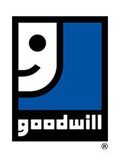 In your job search, you’ve likely encountered employers who have moved away from a standard fill-in-the-blanks company application form and are now asking you to submit a résumé highlighting your skills and qualifications for the job at hand.
In your job search, you’ve likely encountered employers who have moved away from a standard fill-in-the-blanks company application form and are now asking you to submit a résumé highlighting your skills and qualifications for the job at hand.
If you’ve never written a résumé before or are seeking a new job for the first time in decades, putting together an impressive résumé may seem confusing and overwhelming. How do you know what information to include? How do you make it look professional instead of something you quickly typed up in a few minutes?
Fortunately, Goodwill® is here to help. Consider the following pieces of advice when putting together your first résumé or updating your current one:
- Keep it to one page when possible and use a current template. Microsoft offers many basic, job-specific and situation-specific résumé templates to choose from.
- Use simple fonts and paper. To ensure your stylistic choices don’t detract from the information you’re presenting, use Times New Roman or a similar font and print your résumé on plain smooth paper (slightly heavier than regular copy paper).
- Create a professional email address. A silly or inappropriate email address can make you look unprofessional. Sign up for a free email address on Gmail, Yahoo or AOL that contains a version of your name (i.e. [email protected] or [email protected]).
- Include keywords from the employer’s job ad or position description. Instead of leaving an employer guessing on how your experience relates to the job at hand, utilize the same language used in the job ad to demonstrate your ability to succeed in the position. Also use words that convey activity, qualification, capability, energy and achievement.
- List your work history in reverse chronological order. This is the most common résumé style and includes each employer’s name and city/state of location, your years of employments, job titles achieved, accountabilities and primary activities.
- Fill in gaps in your employment history with volunteer work. If your résumé reveals long or repeated terms of unemployment, consider supplementing your work history with any volunteer work your may have done in your school, church or community.
- List formal education. Include your school name, location, course of study and graduation date for all education achieved. If you have received a college degree, you can opt to leave high school information off your résumé.
- Detail meaningful training, certifications and occupational affiliations. Your task is to present the strongest case to your potential employer that you’re the one they should hire. List anything with a direct connection with the job objective.
- Prepare to submit your résumé electronically. While some employers do accept traditional print résumés, many ask applicants to apply through the company’s website or on an in-store kiosk. A basic, pared-down version of your résumé can make it easy for you to locate the information you need when you have to re-enter it through one of these methods.
- Proofread for errors. Never send out a résumé without asking several people to proofread the document for grammar, spelling and formatting. These elements are important to employers and one error could mean the difference between getting invited for an interview and getting passed over.
Remember that your résumé is not an autobiography of your work life, but a marketing tool to get you hired by a specific company. Don’t include personal or family information, and make sure you tailor each résumé according to the needs of a specific employer.
Goodwill agencies across the U.S. and Canada offer free job training and preparation services — including résumé writing — that can help you be successful in your employment search. To find the Goodwill headquarters nearest you, where you can work with employment specialists on perfecting your résumé:



